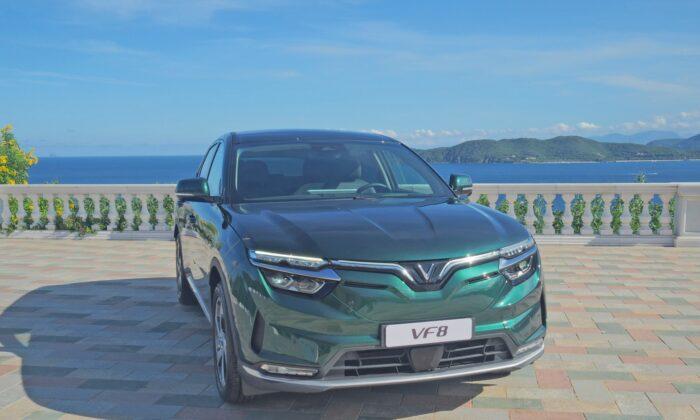Not satisfied with just knocking it out of the park following the release of the quirky and highly-lauded IONIQ 5 EV crossover last year, Hyundai served up another wow moment unveiling the IONIQ 6 sedan at the 2022 LA Auto Show.
Its curvy silhouette, particularly the dramatically arcing nose and roofline, is certainly interesting to look at but also serves another important function.

“So, the design briefing for this car was all about how do we [get] that unique, functional aesthetic. We literally started with images printed out of streamline trains and planes, Raymond Loewy (French-American industrial designer) Coke machines, [and] what looks efficient: dolphins, sharks, peregrine falcons,” said Simon Loasby, head of Hyundai Style Group, during a walkaround of the vehicle.
The process led to the unusual boat-tail profile, which, aided by other features including active air flaps in the front bumper, rear spoiler, underbody cover and reduced wheel arch space, allows the IONIQ 6 to achieve a low drag coefficient of 0.22 - the same as a Porsche Taycan. Despite sharing the 5’s identical single-or-dual electric motor setup, the maximum estimated 547-kilometre range is an improvement of roughly 100 kilometres (depending on drivetrain and battery configuration) simply due to the better aerodynamics.

The head and tail lamps utilizing Parametric Pixels LED lighting is another shared similarity. The dot-matrix-esque shapes are found not only on the exterior but carry over into the cabin as well in the middle of the two-spoke steering wheel and around the air vents and centre console area. Thanks to the flexibility of the Electric-Global Modular Platform this so-called streamliner is built upon, the 2,950-millimetres long wheelbase and stretched out greenhouse yield a lot of interior room.
A 12.3-inch digital instrument cluster sits next to a matching 12.3-inch touchscreen infotainment display under a single piece of glass, resulting in a very clean looking dashboard. There’s ambient lighting and drivers can customize almost any colour under the sun, out of a spectrum of 64 tones, intended to help occupants feel relaxed. Trim and upholstery are made using sustainable materials such as recycled PET (headliner), vegetable oil-derived bio paint (doors) and recycled fishing net (carpet), a Hyundai first.

As mentioned above the mechanicals are familiar. The top all-wheel drive variant boasts a 74-kilowatt front electric motor and 165-kilowatt rear mated to a new larger 77.4-kWh battery, producing a net 320 horsepower and 446 lb-ft of torque that’s good for a 0 to 100 km/h time of under five seconds and a range of approximately 500 kilometres.
Supporting both 400 and 800-volt charging, when connected to a 350-kilowatt Level 3 station getting from 10 to 80 per cent capacity takes 18 minutes. Plugging in at home? A full top-up at 240-volt Level 2 is completed in seven hours and 10 minutes. On the flip side, the vehicle may be used as a mobile charger to provide juice for recreational equipment or even another EV stranded on the road.

This is the first model in the lineup capable of receiving over-the-air firmware updates, improving performance, upgrading navigation and multimedia and potentially resolving a recall without the need to visit a service centre. The 2023 Hyundai IONIQ 6 is part of the brand’s overall strategy to launch 17 EVs by 2030, and is expected to hit showrooms in the spring.





